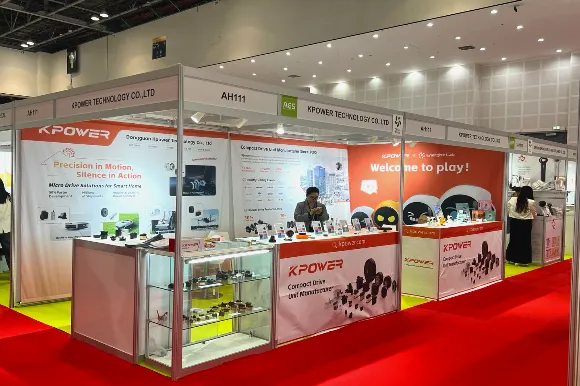part 1:
Unlocking Precision: The Art and Science of Connecting Servo Motors for Seamless Motion
In the realm of modern automation and robotics, few components are as pivotal as the servo motor. Celebrated for their ability to deliver precise control of angular or linear position, velocity, and acceleration, servo motors form the backbone of countless applications—ranging from industrial machinery to hobbyist robotics. But behind every smooth movement lies a fundamental, often overlooked aspect: the connection. Properly connecting a servo motor is not just a technical chore; it’s an art that influences performance, longevity, and safety.

Understanding the Basics of Servo Motor Connections
Before diving into how to connect a servo motor, it’s essential to understand what makes these devices tick. At their core, servo motors consist of a rotor, stator, and a control circuitry—usually housed within a compact shell. The connection process involves two main types: electrical wiring and mechanical mounting.
Electrical Wiring: Most servo motors come with a cable or terminal block that connects to a servo drive or controller. Typically, you'll encounter three primary wires in brushed DC or AC servo motors: power (positive), ground (negative), and control signal. Brushless servo motors, common in high-performance applications, often incorporate additional wires for feedback signals such as Hall sensors or encoders.
Mechanical Mounting: A secure attachment to the frame or fixture is crucial. Proper mounting ensures accurate motion and prevents vibration or misalignment, which can lead to wear or failure.
Types of Servo Connections
Depending on the application, environment, and level of control detail, the connection setup can vary considerably. Here are the most common types:
Simple Power and Control Signal Connection: -basic, often used in hobbyist or simple automation applications. Involves connecting the motor’s power and a basic control signal, such as PWM (Pulse Width Modulation) or analog voltage.
Encoder Feedback Integration: For precise positional control, especially in industrial contexts, connecting feedback devices like incremental or absolute encoders is essential. These sensors relay position and speed data back to the controller, enabling closed-loop control.
Networked Control Connections: In sophisticated systems, servo motors can communicate via industrial protocols such as EtherCAT, CANopen, or ProfiNet. These networks allow multiple servos to be controlled simultaneously, often occupying a central controller like a PLC or CNC machine.
Choosing the Right Connection Method
The selection hinges on several factors:
Application demands (precision, speed, load). Environmental conditions (temperature, moisture, vibration). Available infrastructure (cabling, connectors, interface modules). Budget constraints and future scalability.
For example, a robotic arm requiring high-precision movement and real-time feedback will demand encoder integration and a robust networked connection. Conversely, a simple conveyor belt system might just need basic power and signal wires.
Step-by-Step Guide to Connecting a Servo Motor (Electrical Aspect)
For those embarking on their first wiring adventure, here’s a straightforward process:
Turn Off Power: Always ensure power sources are disconnected before starting any wiring to prevent injury or damage.
Identify Motor Wires: Consult the manufacturer’s datasheet or manual. Typical wire colors often follow industry standards but verify to avoid mistakes.
Connect Power Wires: Securely connect the positive (+) and negative (-) wires to the corresponding terminals on the power supply or drive. Use crimp connectors and verify tightness to prevent loose contacts that could cause intermittent operation.
Connect Control Signals: Depending on your control system, this could be a PWM, analog voltage, or communication protocol lines. For PWM signals, connect the signal wire to the designated input on the servo drive; for serial protocols, connect according to the pinout specifications.
Feedback Connection: If utilizing encoders, connect the feedback wires as specified, ensuring polarity and shielded cables are used to minimize noise.
Grounding: Proper grounding is essential. Connect the motor chassis and control system grounds to reduce electromagnetic interference (EMI) and protect against electrical faults.
Verify and Test: Double-check every connection, then power up the system carefully. Monitor for abnormal behavior such as excessive heat or unusual noise.
Mechanical Connections and Mounting Considerations
While electrical wiring is vital, mechanical mounting plays an equally decisive role. A misaligned servo motor can produce vibrations, reduce lifespan, or compromise positional accuracy. Use the appropriate mounting brackets, anchors, and spacers as specified in the datasheet.
Ensure that:
The motor shaft is aligned with the driven load. Mounting screws are tightened uniformly without over-torquing. Vibration-isolating elements are used if necessary. Cooling fans or vents are unobstructed.
Dealing with Common Connection Challenges
Despite careful planning, issues can occur. Understanding common pitfalls helps to troubleshoot effectively:
Loose Connections: Vibration or thermal expansion can loosen wires over time. Regular inspection and secure crimping prevent this.
Electromagnetic Interference (EMI): High-frequency signals can introduce noise. Use shielded cables and proper grounding to mitigate.
Incorrect Wiring: Always verify color codes and pinouts before powering up. Using a multimeter can confirm connections.
Feedback Signal Errors: Incorrect feedback wiring can cause erratic movement. Check encoder connections and signal integrity.
Stay tuned for Part 2, where we’ll explore advanced connection techniques, best practices for durability, and modern innovations transforming servo motor management!
Leveraging innovations in modular drive technology, Kpower integrates high-performance motors, precision reducers, and multi-protocol control systems to provide efficient and customized smart drive system solutions.




































